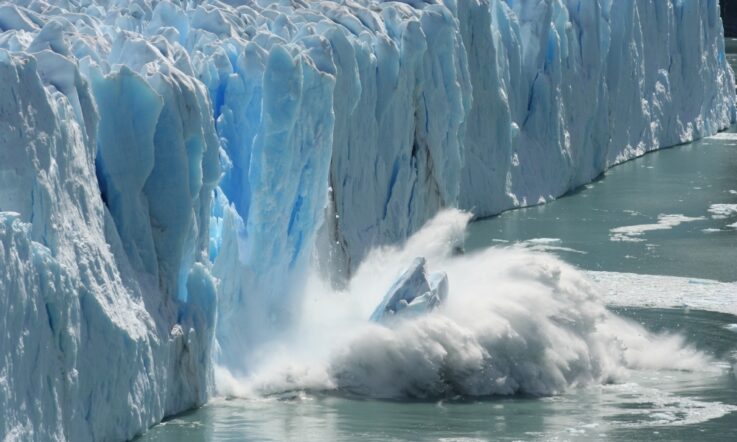In this Q&A, Teacher speaks to Dr Gabi Mocatta, a Lecturer in Communication at Deakin University and one of a group of Australian researchers behind the Curious Climate Schools project. The initiative connects experts with schools so that students can have their questions about climate change answered.
Here, Dr Mocatta explains more about the project, shares the topics students want answers on, and feedback from teachers who have participated.
Can you start by giving readers an overview of what Curious Climate Schools is about, and why it started?
Curious Climate Schools is a free-to-access science communication and engagement project that was established in response to the paucity of holistic learning about climate change in Australian schools. As an interdisciplinary group of researchers in Australia working on climate change, we well understand the need for Australians – including our young people – to be climate literate, but we were not seeing climate change adequately addressed in the Australian school curriculum. Our preliminary research showed that in the Australian Curriculum at the time (when Curious Climate Schools started in 2020) where climate change was touched on, it was predominantly addressed through the lens of science. While understanding the basic science behind climate change is important, it’s crucial to learn about the social dimensions of climate change and how we should be responding to it. Curious Climate Schools was established to fill this gap in school education. Curious Climate Schools is about student-led, participatory and holistic learning on climate change. How does Curious Climate Schools work? School classes brainstorm their top-10 questions on any aspect of climate change, and submit them via their teacher to the Curious Climate Schools team through the project website. Then we direct questions to our multidisciplinary group of experts, making sure we bring the latest research expertise to answering each question. Expert answers are posted on our project website. This way, we are able to give school students thoughtful and credible answers to their climate questions, raising their climate literacy and giving their concerns the attention and legitimacy they deserve. Where schools request it, we are also able to send climate experts into classrooms to talk climate change with students in person.
How many schools and students has the project now connected to experts? What age groups are involved? And how many experts are part of the project?
Curious Climate Schools is for kids from Grade 5 to 12. The project is now in its third year and, to date, we have worked with over 2,000 students from about 30 schools all around Tasmania. We have engaged over 60 experts in this effort. Our experts include climate scientists, conservation biologists, fire scientists, chemists, lawyers, engineers, psychologists, social scientists, oceanographers, Indigenous knowledge specialists and health experts.
What has the feedback from teachers been? How is this outside expertise helping their own planning and teaching?
As part of the research that accompanies this project, we have interviewed teachers. Teachers said the Curious Climate Schools program was highly valuable and impactful for their students. In particular, teachers said the web resource was an opportunity for students to go beyond their own climate change questions and engage with the questions of other young people. Some teachers have dedicated whole lessons in class to students exploring the website and following their own interests and inquiries about climate change. Others spoke about the value of having climate experts attend in-class visits, suggesting that this was a highlight for both themselves and the students. All teachers indicated that they would like to participate in the Curious Climate Schools program again, given it had offered their students so much learning. One teacher (who participated in 2021) had this to say: ‘… please keep up the good work that you are doing, it’s really important, critical. It’s so amazing to see all those levels of university thinking, science thinking, back to the ground level, the children and the school thinking. And how that can all meet and merge, to me that just makes it so rich a learning experience, and so important.’
Why is student-led enquiry important in relation to climate change?
Science communication research has long shown that the one-way ‘deficit model’ of communication doesn’t increase public understanding. Participatory communication is much more effective when it comes to communicating issues of science. But as we’ve said, climate change cannot be taught just through the lens of science: it’s a wicked problem whose solutions are inherently interdisciplinary. This is why we advocate for more holistic teaching about climate change in schools. Participatory, student-led enquiry is especially important in relation to climate change, as it allows students to foreground their own questions and concerns related to the complex issue of climate change. It also validates students’ legitimate worry about climate change. Having climate experts answer them directly also shows students that adults are listening to their concerns – and are answering them in a personalised way, taking time and care.
Last year’s questions included issues of responsibility, urgency, adaptation and being heard by politicians. What kinds of questions are students submitting a year on?
Broadly, there don’t seem to be major pattern differences. But I would reflect that there are more questions this year based on the school-level action: students asking about changes to their uniforms to be more sustainable, for example. There are also questions this year in which students ask directly about managing their distress. And there’s also strong focus again – as last year – on how to respond to climate change, across a variety of scales. So not just ‘what can I do?’ but also how do we hold governments and business decision-makers to account and what can they be doing, and how they ought to be aligning with science in their decision-making.
Reflecting on those questions and thoughts from students, is there anything that’s surprised you?
One thing I think the whole team has thought a lot about is the many questions asked around the idea of ‘how can we go back to the way things were before?’ and ‘if we can stop or reverse it, would we be able to completely heal the damage that has been done?’ We have had many variations of this question. The truth is, in human timescales, some of the damage done is already irreversible. We are on a trajectory of change – changes will not stop. Yes, if we act profoundly and rapidly, we can avoid the worst impacts of climate change. But every child we connect with through the Curious Climate Schools project will live their lives with a backdrop of impacts from climate change. We don’t think that schools have adequately imparted that to students to date, or dealt with the many profound implications of this in young people’s lives – including the mental health implications of this realisation.
What are some of the misconceptions around teaching students about climate change, and how can schools start to address these?
One of the key misconceptions is that climate change is an issue that is ‘too hard’ to discuss with kids in schools. There’s been this misconception that teaching about climate change in schools is bad for kids. This is really contrary to the research, which shows that although learning about climate change is confronting, the best way to deal with this is in fact to talk about it – not to stay silent. We owe it to our young people to take their climate concerns seriously, and make sure they are thoroughly climate literate for their futures in a climate change-impacted world.
Is there anything else you would like to add?
We have plans to expand and spread Curious Climate Schools. We think schools everywhere could run climate literacy programs using this model.
Curious Climate Schools has also had a lot or recognition. It’s frequently been featured in the media (Mocatta & Lucas 2021; Beasy et al., 2022). We have also won several awards. We’ve been nominated for an Australasian Green Gown Award, we won the International Association of Media and Communication Research Climate Communication Award 2022, and project lead Dr Chloe Lucas recently won the US National Academies’ Science Communication Award 2022 for the project.
References
Beasy, K., Lucas, C., Mocatta, G., Pecl, G., & Kelly, R. (2022, May 23). How well does the new Australian Curriculum prepare young people for climate change? The Conversation. https://theconversation.com/how-well-does-the-new-australian-curriculum-prepare-young-people-for-climate-change-183356.
Mocatta, G. & Lucas, C. (2021, October 19). Children deserve answers to their questions about climate change. Here’s how universities can help. The Conversation. https://theconversation.com/children-deserve-answers-to-their-questions-about-climate-change-heres-how-universities-can-help-169735
Thinking about your own context, how could a partnership with experts outside the school help to meet teaching and learning needs? With a colleague, identify a topic or subject where students would benefit from external expertise and list the steps you will need to take to make it happen.



